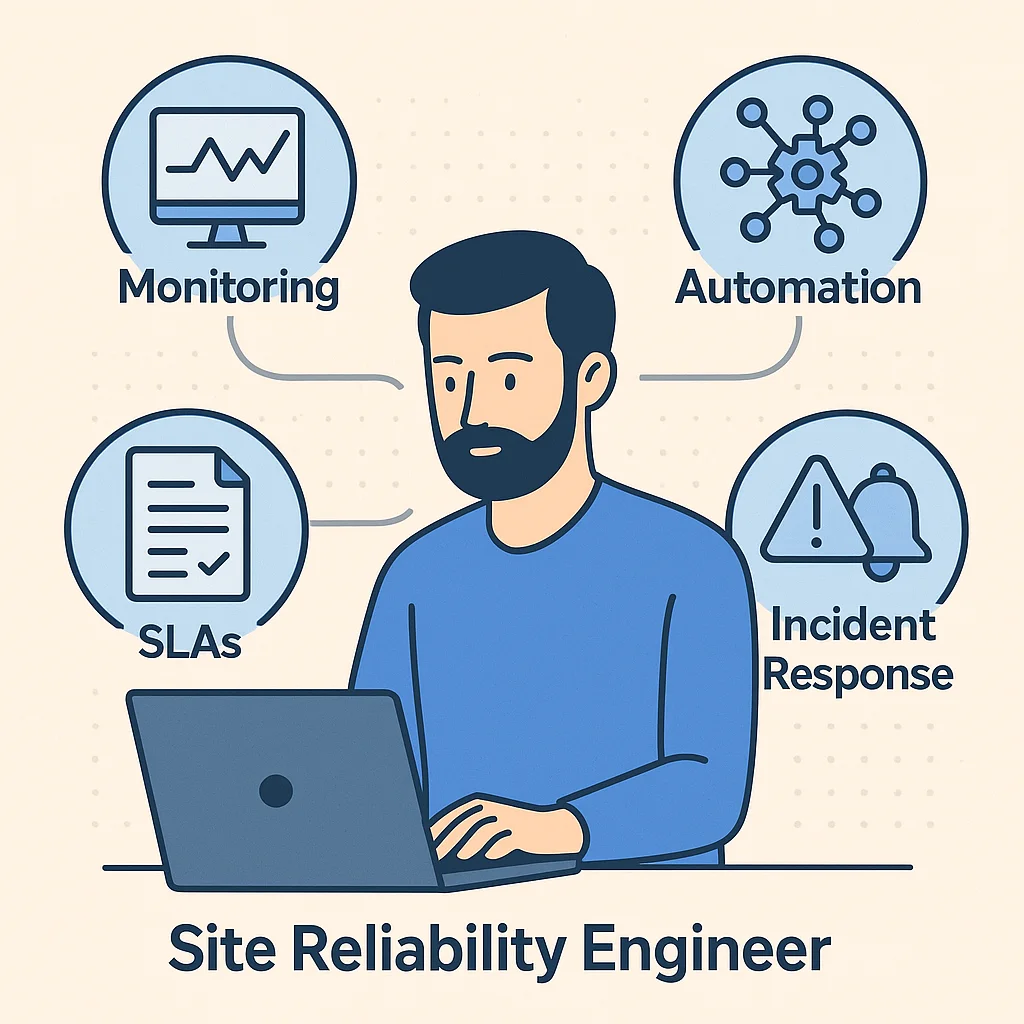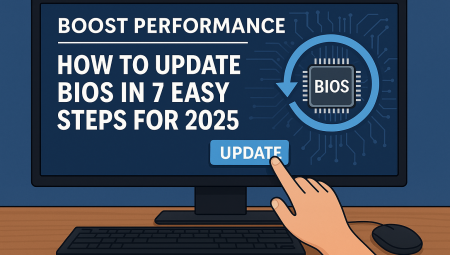As digital systems grow increasingly complex in 2025, ensuring they remain reliable, scalable, and performant is more critical than ever. Site Reliability Engineering (SRE) has emerged as a foundational discipline that bridges software development and IT operations, helping organizations deliver highly available services at scale.
This guide is crafted for DevOps engineers, software architects, platform teams, and tech leaders who seek actionable and expert-backed SRE best practices to reduce downtime, improve system observability, and enhance customer satisfaction. Whether you’re new to SRE or scaling your existing infrastructure, this comprehensive resource is designed to elevate your operational excellence.
What Is Site Reliability Engineering?
Site Reliability Engineering (SRE) is a discipline that applies software engineering principles to operations and infrastructure problems to create scalable and highly reliable systems.
Developed by Google, SRE emphasizes automation, monitoring, performance, and reliability over traditional manual operations.
Key SRE Responsibilities:
- Define Service Level Objectives (SLOs)
- Automate infrastructure and deployments
- Monitor system health with Service Level Indicators (SLIs)
- Create runbooks and incident response plans
- Perform post-incident reviews and blameless retrospectives
Why Are SRE Best Practices Essential in 2025?
In 2025, with the surge of edge computing, container orchestration, AI-driven monitoring, and globally distributed systems, SRE best practices help organizations:
- Maintain uptime during high demand
- Reduce Mean Time to Recovery (MTTR)
- Enhance developer productivity
- Meet compliance and SLA requirements
- Support platform engineering maturity
Without adopting SRE methodologies, teams often struggle with fire-fighting mode, missed SLAs, and poor user experiences.
10 Proven Site Reliability Engineering Best Practices
1. Set Clear SLIs, SLOs, and SLAs
Define measurable service expectations:
- SLI: What are you measuring? (e.g., latency, availability)
- SLO: What is the target goal? (e.g., 99.9% uptime)
- SLA: What’s the contractual commitment?
These metrics drive prioritization, monitoring, and accountability.
2. Eliminate Toil with Automation
Manual tasks = risk. Use scripts, CI/CD pipelines, and GitOps tools to:
- Automate deployments
- Restart failing services
- Auto-scale infrastructure
This reduces human error and frees teams for innovation.
3. Embrace Error Budgets
SLOs are not just limits—they’re opportunities for innovation. If uptime exceeds targets, use your error budget for:
- Testing new releases
- Implementing risky but valuable features
- Stress-testing components
4. Build Robust Incident Management Protocols
A solid response plan includes:
- On-call rotations
- Templated runbooks
- Real-time alerting with severity levels
- Incident command structures
Faster detection and response minimizes user impact.
5. Focus on Observability, Not Just Monitoring
Monitoring answers “what” happened; observability answers why. Improve observability with:
- Centralized logs (e.g., ELK stack)
- Distributed tracing (e.g., OpenTelemetry)
- Metrics dashboards (e.g., Prometheus + Grafana)
6. Implement Chaos Engineering
Deliberately inject failure to build confidence in your system:
- Use tools like Gremlin or Chaos Monkey
- Simulate zone failures, network latency, or instance termination
- Review how the system recovers under stress
7. Standardize Blameless Postmortems
After every major incident:
- Identify root causes
- Focus on system improvement—not assigning blame
- Share findings transparently
This fosters learning and resilience.
8. Version Infrastructure as Code (IaC)
Use Terraform, Pulumi, or AWS CDK to version and control infrastructure like software code:
- Faster rollbacks
- Reproducible environments
- Better change history tracking
9. Adopt Shift-Left Reliability
Reliability must start in development:
- Integrate performance testing in CI/CD
- Define SLOs at design phase
- Catch potential failure early
10. Foster a Reliability Culture
SRE is more than tools—it’s a mindset:
- Empower engineers to own reliability
- Reward proactive mitigation
- Integrate reliability into OKRs and engineering KPIs
Real-World Example: Google’s SRE Playbook
Google’s internal SRE teams manage thousands of services using these very principles. Their approach includes:
- Weekly SLO reviews
- Fully automated canary deployments
- Error budgeting for all teams
- Dedicated SRE rotations and shared tooling
You can explore more in Google’s official SRE Book.
Pro Tips from SRE Experts
- Avoid alert fatigue — Tune alerts to prioritize critical incidents only.
- Rotate on-call schedules weekly to reduce burnout.
- Invest in documentation — Your future self will thank you.
- Monitor deployment velocity, not just system health.
- Run GameDays quarterly to practice response under pressure.
- Keep runbooks simple and step-by-step.
- Use progressive delivery (canary/blue-green) for safer rollouts.
Frequently Asked Questions (FAQ)
What’s the difference between DevOps and SRE?
While both aim to improve system reliability and collaboration, SRE uses engineering principles to automate operations. DevOps is a broader culture shift; SRE is a concrete implementation.
Do small teams need SRE?
Absolutely. Even with limited staff, adopting lightweight SRE practices like incident reviews, monitoring, and automation can vastly improve stability.
How do I measure reliability?
Use SLIs like availability, latency, and error rates. Compare them to your SLOs. If you meet your targets, your system is reliable by design.
Is SRE relevant outside of tech companies?
Yes. Any business relying on digital platforms—ecommerce, healthcare, finance—benefits from SRE.
Conclusion
Site Reliability Engineering is not a luxury—it’s a necessity for building modern, resilient digital systems. The practices above are not just theory; they’re battle-tested strategies used by top engineering teams worldwide.
Whether you’re launching a startup, modernizing legacy systems, or running a large-scale SaaS platform, embracing these best practices will help you deliver faster, recover quicker, and sleep better.
💬 We’d love to hear your SRE journey!
Have you implemented any of these best practices? What challenges have you faced in scaling reliability efforts? Drop a comment below and share your experience with the community.
🔗 Additional Resource: Google’s Site Reliability Engineering Book – A trusted and detailed reference for advanced SRE concepts.



